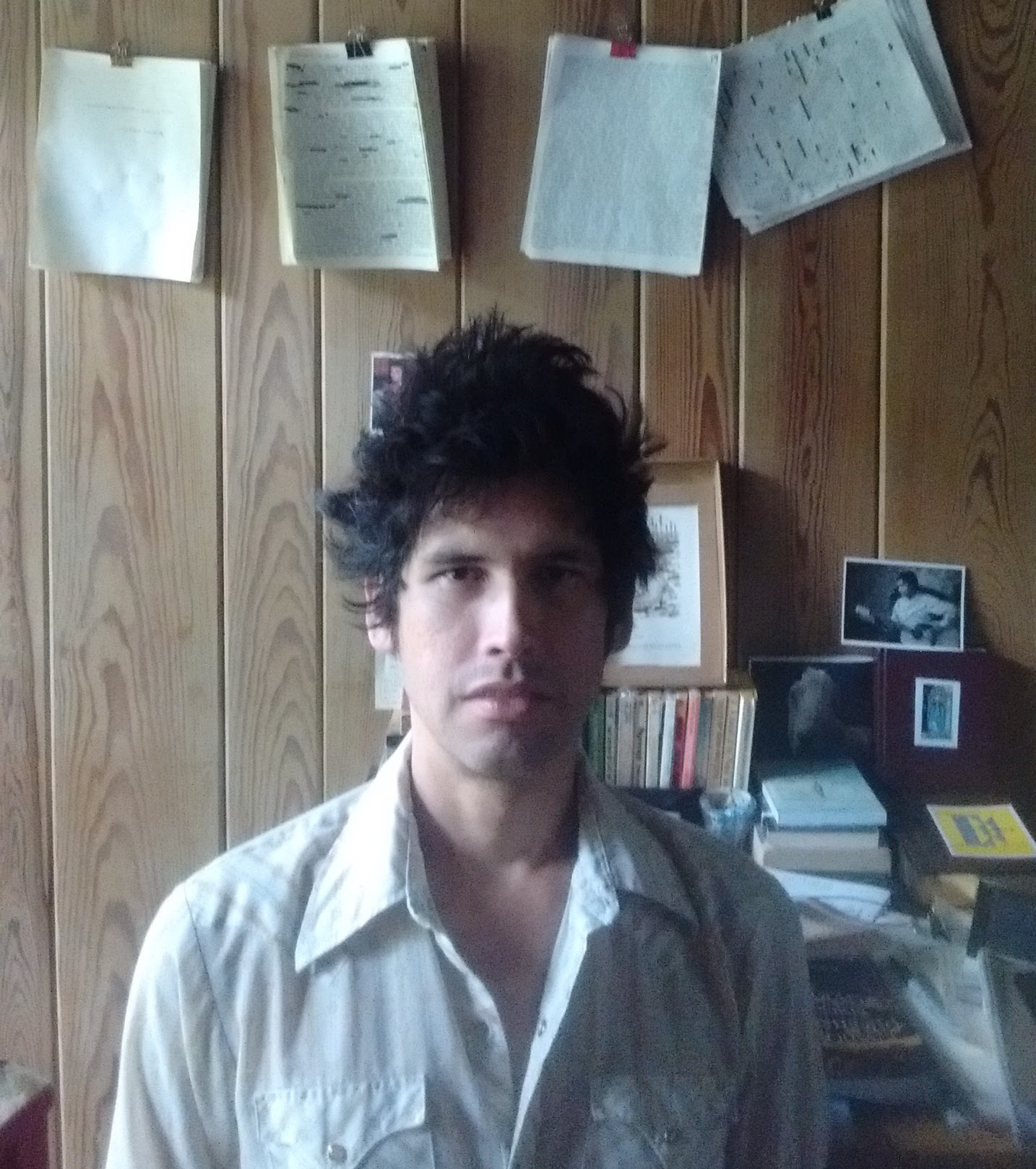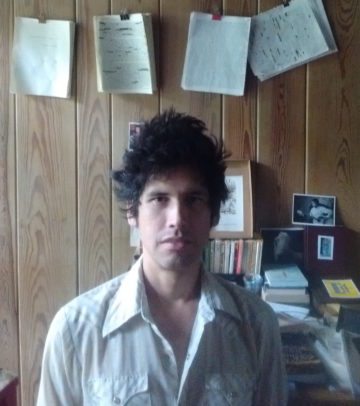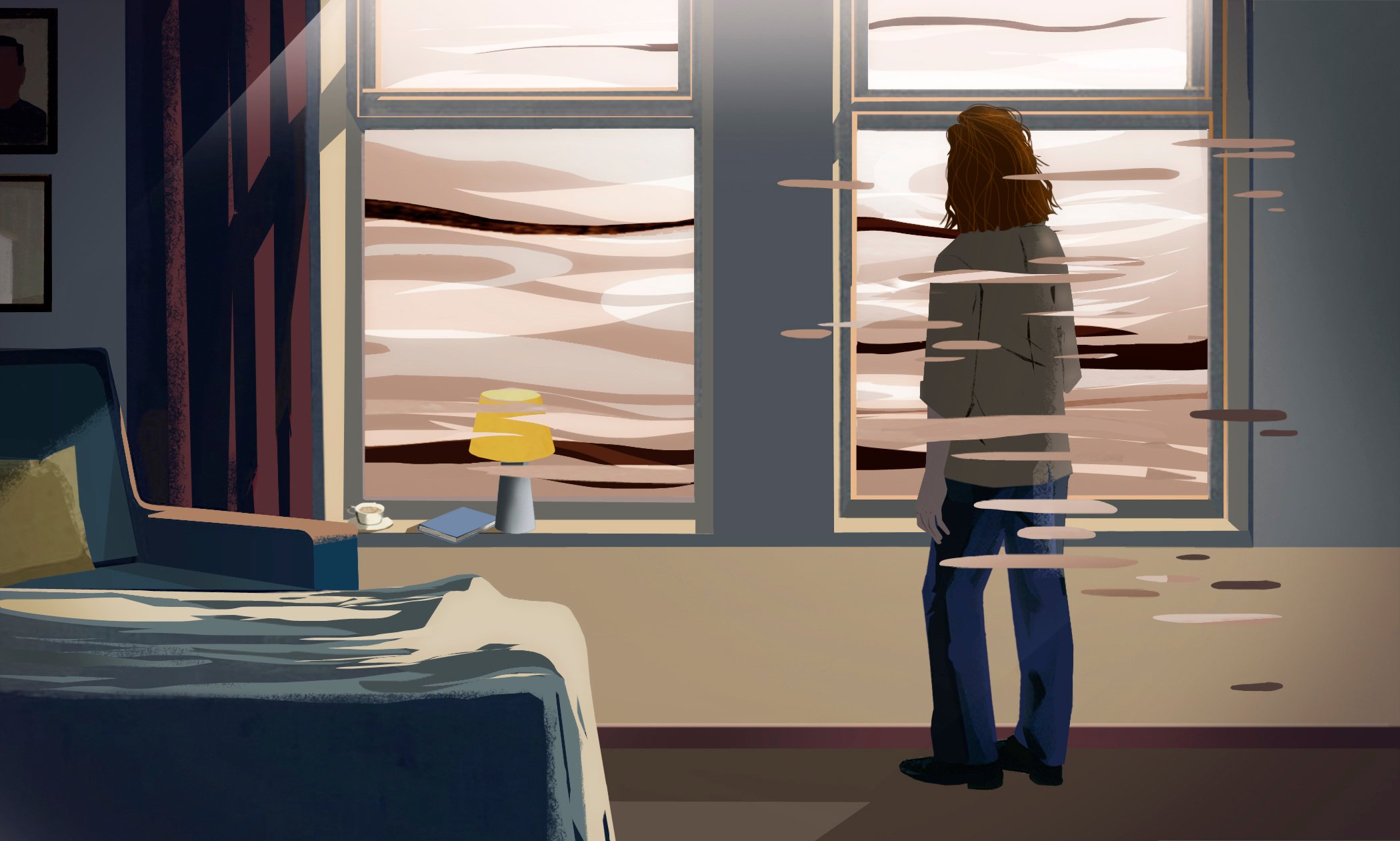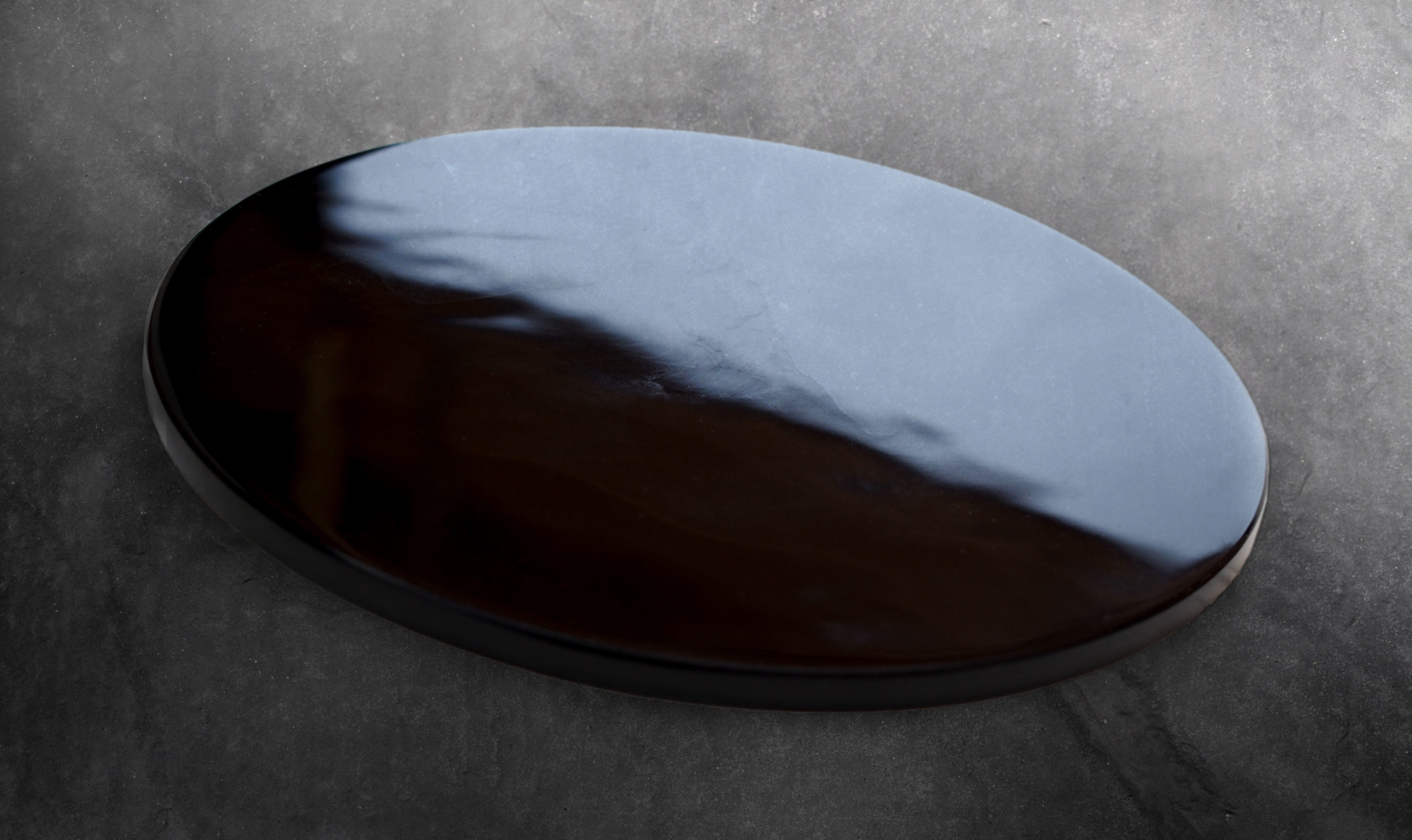
Short Story Contest Finalist: ‘Lee Harvey in His Element’

“Try unearthing something fresh” is Amelia Gray’s advice to writers of short fiction. “The best stories have something that needs to be said urgently: now, today, this very moment.”
Freshness and urgency is a difficult combination for a writer to achieve, but many entrants in this year’s Observer short story contest, guest judged by Gray, hit the mark. The five finalists are arguably our strongest batch yet, but getting there required some punishing decisions.
Throughout September we’ll publish the four runners-up, in no particular order, leading up to the winning story in our October issue. Last week we kicked things off with Nancy Dinan’s “Melanie Lewis Plays Dominoes.”
Today comes Fernando A. Flores’ “Lee Harvey in His Element,” which imagines Oswald as an aspiring musician who, as part of a two-man band called Sarcophagus, recorded two songs. After the story, Flores writes about what inspired it, and leaves us with this gem: “Perhaps if somebody had taught [Oswald] to play guitar at an early age things’d be different.”
***
He’s better known as the man who assassinated JFK, but a few still remember Lee Harvey as the frontman in the two lost recordings of the band Sarcophagus. Lee Harvey’s brief musical career began shortly after he got discharged from the Marines and he moved into the attic room of his mother’s apartment off Hemlock Avenue on the east side of Dallas. Lee Harvey’s only belongings during this time were: a duffel bag stuffed with clothes; a cheap phonograph, where he played Shostakovich, blues recorded at Angola Prison and Johnnie Ray’s hit singles; Bertolt Brecht and Karel Čapek paperback plays; a shoddy translation of Olaf Stapledon’s Last and First Men; three framed photographs, one of his mother holding Lee Harvey as a baby boy, another an image of Madame Blavatsky he cut out of Life magazine, and the third of an unidentified vaudevillian actress from the late nineteenth century, which was the only portrait he kept out of sight.
Lee Harvey got hired as an apprentice at Strauss-McNeely Books & Binding, where he was to learn the art of collating academic monographs. It was here he struck a friendship with another employee, Sinclair Bowling, after Lee Harvey identified a tune the young Okie was whistling as a piece by Mussorgsky. The two young men tossed around names of other composers and works of literature during lunchtime and the course of the workday. Lee Harvey listened attentively to Bowling’s ideas of Russian Constructivism in the context of postwar America, and in turn Bowling listened to Lee Harvey’s stance on what’s been going wrong in Southwestern musical ideals since 1917. After their shift that day they both caught the same bus back to East Dallas and discussed Hart Crane, though Lee Harvey was mostly familiar with the man’s final days and suicide rather than his poetry.
Toward the end of that fateful bus ride Bowling casually mentioned being technically proficient with a harmonium, said he could hold a steady beat on a rudimentary drum kit. Lee Harvey lied and claimed he could strike a few chords on a guitar. That evening, a restless Lee Harvey bought a guitar with a crooked fret board at a secondhand shop, along with a manual to learn chords from the music sheet store, using his last twelve dollars.
It is at this point of the story that accounts start to differ significantly and run wild. In the Warren Commission report, Theodore Strauss, immediate supervisor to Lee Harvey and Sinclair Bowling at the book bindery, says what the boys discussed was mostly “schoolboy drivel.” When pressed to define “schoolboy drivel,” Theodore Strauss says, “Girls and cars and pulp novels and Hollywood stars and such.”
Marguerite Oswald — Lee Harvey’s mother — when asked about her boy’s time before he boarded a ship to Europe and made his way into Russia, went on record saying: “Oh, yes, my son was always up in his room strumming the guitar. I’m glad you brought that up, because what nobody is saying about my son is that he was gifted. Don’t ask me now to describe his gift. It is something spiritual that I can identify with because it’s something I’ve always felt myself carrying. And I always knew this spiritual thing was in Lee, because I’m his mother. I came all the way to Washington on my own dime to prove my son’s innocence, and I’m glad you brought that up because the historical truth is, my son was a creative individual. He’d listen to his records up there so quietly all by himself. None of us were ever allowed up there when he was playing his records, and, yes, strumming his guitar. Now I don’t know about this Bowling boy, and I don’t recall my son being employed at a book bindery. Lee had so many jobs that it’s a possibility. And as far as a musical duet named Sarcophagus? I suppose that’s a possibility, too. Lee did love reading stories of when they dug up that Egyptian King Tut’s grave. And the curse that came with the bargain. I am his mother and I know these details. I came all the way to Washington to deny all accusations against my son. To clear his name. And who is asking me how I’m paying my way? I have my living expenses, too, you know, while I continue touring the country advocating for my son. My son was a hero.”
When interviewed, Sinclair Bowling admitted that the first time he met Lee Harvey he thought him a jokester because Lee Harvey was wearing thick-rimmed glasses without the lenses. So only the frames? Bowling was asked. Yes, Bowling replied, only the frames. The following day, Lee Harvey showed up without the glasses and Bowling never saw an opportunity to bring them up.
Bowling said Lee Harvey was good for conversation, was a good listener, and sure, he could talk about art, and sure, he could strum a few chords, and sure, they played together two, three, maybe four times and perhaps recorded, but there was a singular thing about Lee Harvey that people just didn’t get: He had a talent with matches. Lee Harvey always carried a matchbox with him, and using a fine pocketknife, he’d carve the profile of a celebrity on every matchstick before striking it. You’d think it couldn’t be done, that a matchstick doesn’t have sufficient surface area for a person’s profile. But Lee Harvey could do it. Bowling wanted to say one of the profiles he carved was that of John Fitzgerald Kennedy, who’d already won a Pulitzer Prize by then but was not quite president. However, upon reflection, Bowling said, he couldn’t be sure.
Out of those interviewed by the Warren Commission, the only to shed light on the two Sarcophagus recordings was Griffith Acosta, proprietor of Texas Thrift and the man who sold young Lee Harvey the guitar itself. Acosta went on record saying: “I remember him a fidgety, anxious young man, but perhaps we’re all a little of those things at that age. Was interested in chamber music and composers. The question that stands out in my memory is Mr. Oswald asking how it was one went from writing songs on a guitar to being orchestral. In short, he was asking how one became a composer. Think I answered like my father would answer, and said you become a composer the same way you become a doctor or a boxcar jumper. You jump a boxcar. You compose. You want to be a composer start composing, or move toward composing. You want to be a boxcar jumper, jump a boxcar.”
About twelve years after Oswald’s death, in the winter issue of the Argentine avant-garde jazz quarterly Tenebrarum, the writer Zik Schweblin writes about a fruitful trip to the United States in an article entitled “Jazz in the Wind.” In it, Schweblin describes meeting the owner of Glitz, an experimental record shop in an artsy area of Chicago, who once sold Oswald the only guitar he ever purchased. In the span of an afternoon, Acosta recounted to Schweblin his life since “all that” (Acosta’s preferred term for the murders of JFK and Lee Harvey and subsequent aftermath).
At the time of his deposition with the Warren Commission, Acosta had sold both thrift shops he owned — it turned out that his brief exchange with Oswald, and being forced to recount their conversation over and over, had led Acosta to some inner reflection. When Acosta came to the part of the story about how he left Texas and came to own such a unique record shop in Chicago, he casually mentioned the resurfaced Sarcophagus recordings he’d cut for Lee Harvey and Bowling.
So the recordings are real? Schweblin asked.
Oh yes, replied Acosta.
According to Acosta, he had approached the government several times after finding the two Sarcophagus tracks he’d recorded back in ’59, the only year he had access to that kind of equipment, since he was also part investor in a radio station. Acosta remembered doing only two takes of each song and that it was Lee Harvey — not Bowling — who had taken one of the vinyls to keep. The other Acosta had kept for his own records, but having sold his belongings and moved several times over between then and ’65, when he was under oath for Earl Warren and the other government officials, he’d lost it. Acosta knew back then that given the time, he would find it. When he finally did, the government no longer cared about those recordings. They must’ve felt it had nothing to do with killing the president, Acosta said. The writer Schweblin, however, had no luck in being one of its few listeners: The record had been stolen seven months prior. The thieves hauled away the 200-pound safe from Acosta’s fortified back office and probably had no idea what was in there, just assumed it had to be valuable.
—
Around this time, south of Houston, a twelve-year-old girl lived in her own fantasy world, where the other children came from an ice planet and had been sent here because their parents were political dissidents back home. In the girl’s world, she was the only one who knew how to be loyal and patriotic, which is why at every school she attended kids eventually caught on and would stop her in the halls to tell her: Your daddy killed our president. And those kids meant it — meant it because they had to. The girl watched as their words became icicles, as everything the kids touched turned to purple rock crystal, and she could see tiny orange spiders running through their veins, stretching their skin. In the outside world she still had control of the army ants, and this comforted the girl. One day the ants would emerge as a cyclone, and when the kids are bitten all over they will remember that army ants live everywhere below the ground they walk on. When the girl got home she had supper with the family and afterwards excused herself. She sat on her bed reading Amazing Stories with the phonograph headphones on, listening to the record she knew had once been her papa’s.
—
Sometime in the early nineties a young lazy-eyed boy in the checkpoint town of Falfurrias, Texas, was running through an orange grove pretending at being a soldier in a great war, when not very far from him, actual shots rang out. The boy ran back home fearing the worst. On the front porch of his grandmother’s two story adobe home, the boy’s mother sat sobbing while his father held back tears, with a red face and his shotgun by his side. The boy was guided by his mother to the hospice room in the house — after a prolonged sickness, his Grandmother Magda had finally passed.
Family as far away as Durango and Chicago attended the modest funeral at the Mexican pantheon in Falfurrias. An old-world-style celebration of Grandmother Magda’s life and legacy ensued at her adobe home until the following day, filled with dancing, carne asada, barbacoa and bouquet spreads of pastries.
When Grandmother Magda’s phonograph and dismal record collection were discovered, it allowed the distant cousins from Durango and Chicago to break through their language barrier and bond over the music. They listened to boleros, polkas, classical compositions, then they came across a smaller record. Instead of a label, on one side, scratched very fine, were the words “This and That,” and on the opposite side the words “One Plus One Don’t Make Two.” They put it on and listened to it with as much curiosity, enthusiasm and patience as they had with the other records. A drone emitted from the mouth of the phonograph like an acidic smell — an unamplified voice echoed, like a ghost trying to groan with its face pressed against glass — an untuned guitar swung like a pendulum — then the fuzzy night started to make its way out of the speakers. All of the cousins held mixtures of frowns and laughing faces. What kind of stuff was Abuelita listening to, one of them asked out loud.
Outside a toddler in braids held tightly to her bag of marbles, suspicious of all the boys, and tried not to flinch when the fireworks went pop-pop, pop-pop.
***
Fernando A. Flores on “Lee Harvey in His Element”:
“What’s most interesting to me about Lee Harvey Oswald is how difficult it is to find two people agreeing on any one detail in his life. Also, Oswald appears to have had the temperament of a frustrated artist. Perhaps if somebody had taught him to play guitar at an early age things’d be different. At any rate, the idea for all this came after reading an out-of-print book by Jean Stafford about Oswald’s mother. The things that woman said in their interviews were quite a riot.”


